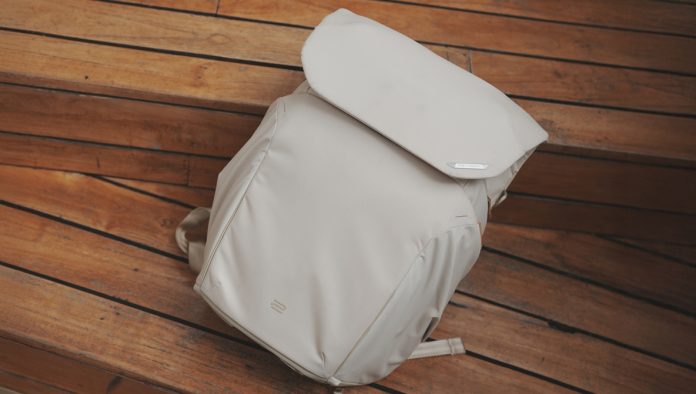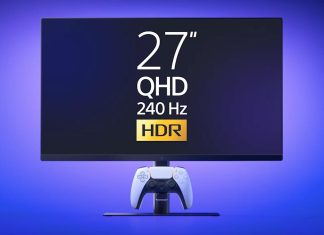This simple-looking backpack offers far more functions than you would expect. It also maximizes space so you can carry almost everything you need for a shoot in the city or even a quick trip away.
Minimalist-looking bags have become very popular, especially in the photography industry, because while they look sleek, they don’t easily get identified as camera bags. They look much less like the typical bulky and utility-focused camera bags that older brands have made into the staple. Just because they have a minimalist aesthetic on the outside doesn’t mean they’re expected to be minimal in function. The Pgytech OneGo 2 backpack is a great example of that.
The Pgytech OneGo 2
The Pgytech OneGo 2 comes in two sizes—20 and 25 liters—and in three colorways: black, sand khaki, and pine green. The 20 L version we’re looking at has external dimensions of 470 x 330 x 190 mm and weighs 1.38 kg. The larger version measures 500 x 360 x 200 mm, making it slightly taller than the smaller version.
The exterior is made of 100% polyester with a significant DWR (durable water repellent) treatment, giving it a matte appearance that is quite resistant to stains and, of course, moisture. On all color variants, the dominant color fills most of the surfaces except for some color accents on the edges of the side pockets and zipper pullers. On the sand khaki version, they come in a light brown color with a leather-like texture. In addition, a metal Pgytech badge can be found on the lower right edge of the flap of the top access point.

On both sides are large flex pockets that can easily hold a travel tripod or a large water bottle. For longer tripods, it comes with a strap that hooks onto any of the loops located on the corners of the bag. Behind these flex pockets are zippered access points. The one on the left (when facing the front of the bag) is a quick side access through which you can reach your camera or lens positioned closest to that side without setting the bag down to open the main compartment. This side door also features a small zippered pocket for accessories.

On the other side is a built-in accessory pouch with many sub-pockets and flexible loops that can store accessories like batteries, filters, memory cards, and other small items such as a wallet or phone.
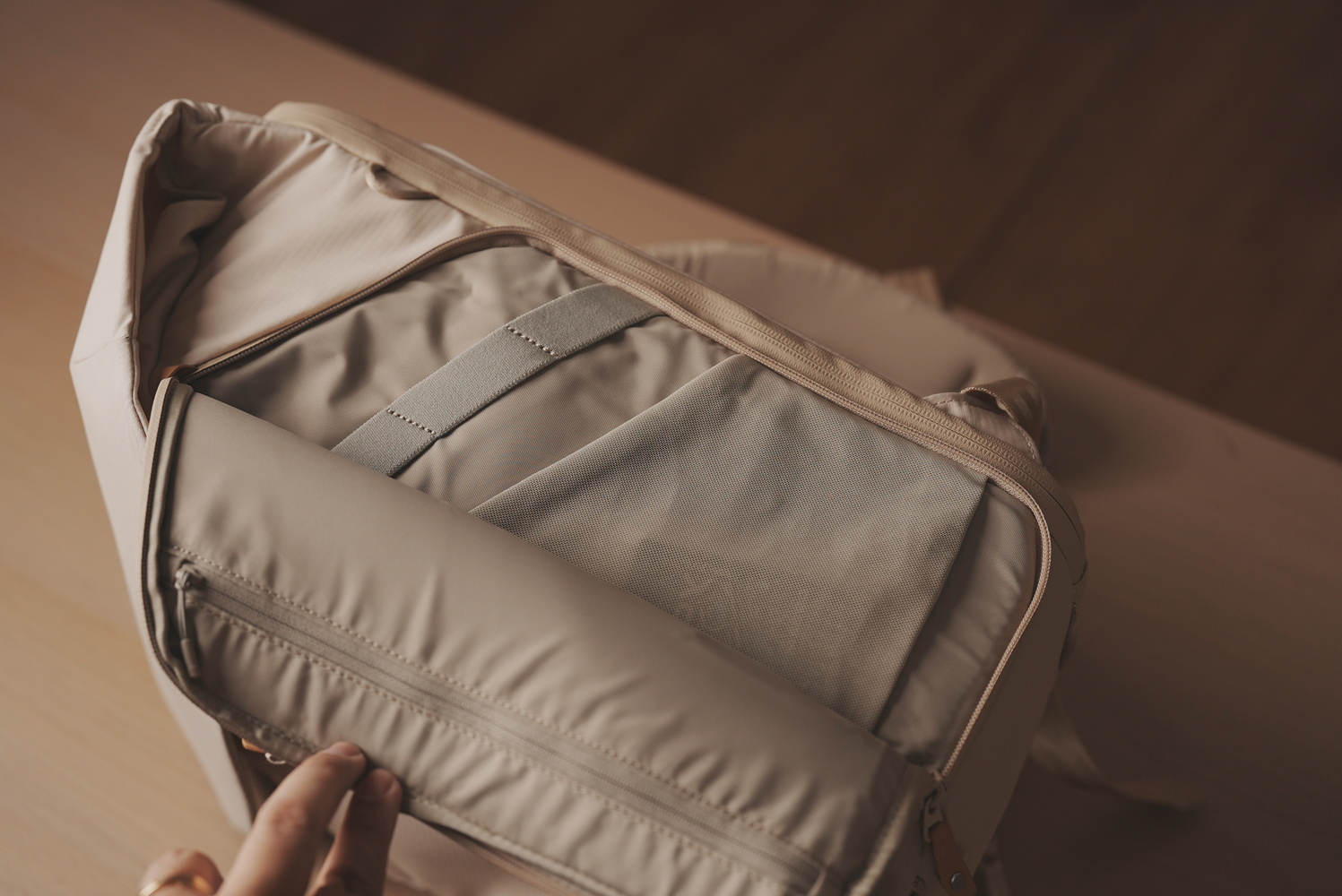
The top access point opens through a top flap secured by a magnetic latch lock. This magnetic lock ensures that whenever you’re not reaching in through the top access, the bag won’t be accidentally left open. To unlock the latch, a small hidden button is located at the center of the flap. This makes it easy to open for someone familiar with the bag but definitely a challenge for anyone who doesn’t own it.

Through the top access point is a compartment closed off by default through the arrangement of the dividers. However, it can be adjusted to be open along with the rest of the main compartment for a more open layout. In this top section, you can easily fit a full frame camera body with an attached standard-sized lens plus an additional lens on the side. Alternatively, it can fit a foldable DJI Mavic drone, even with the remote controller beside it. With this arrangement, there’s more vertical clearance that can be maximized by moving up the top divider.

The rear panel of the bag is covered with uniquely textured EVA foam featuring a circular design, along with an additional side handle on the right that doubles as a loop for carry-on luggage handles. This is attached to two significantly padded shoulder straps with accessory loops and an adjustable chest strap with its own rail.
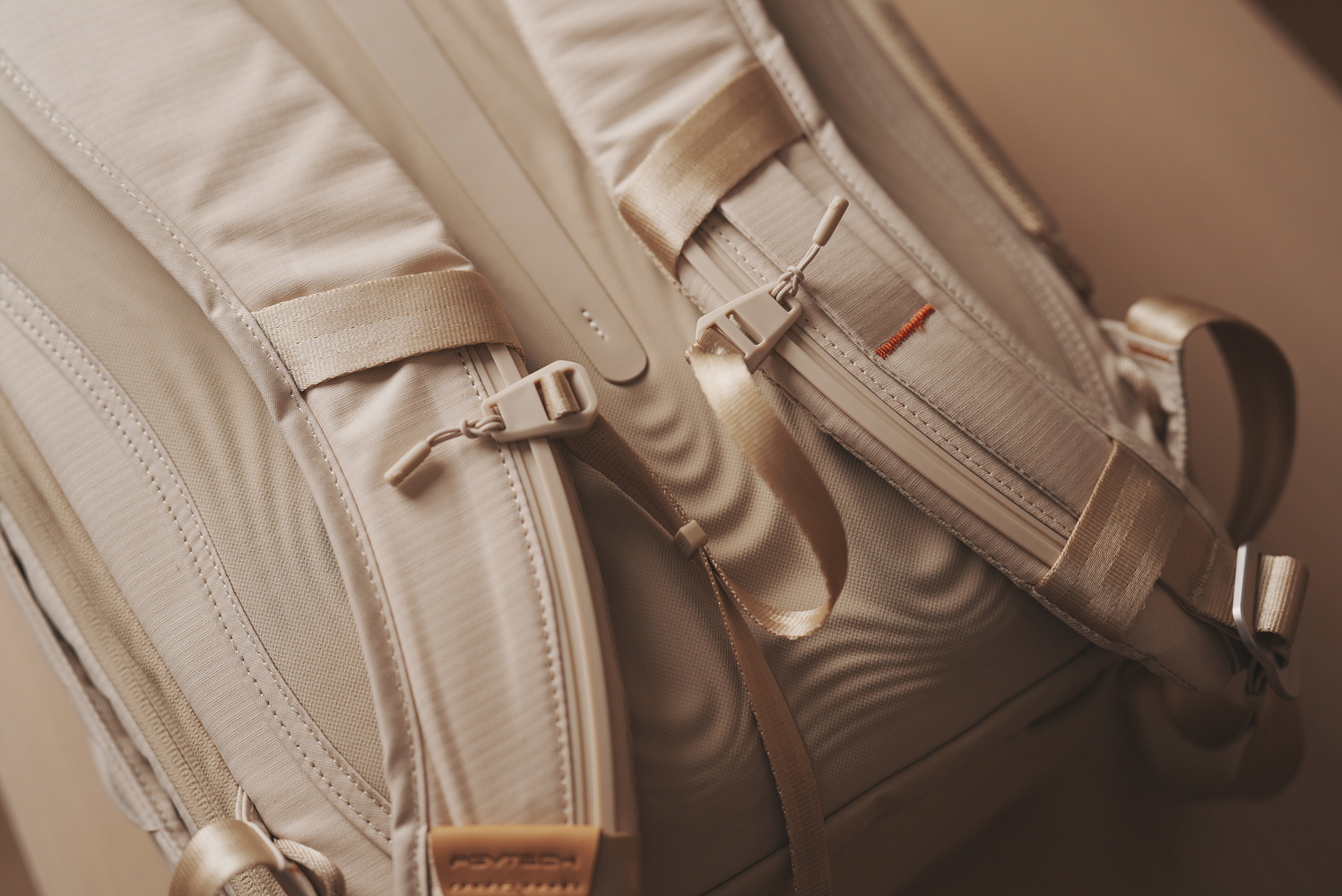
Camera Compartment
The main compartment’s zippers run along the three upper edges of the bag and open around the entire perimeter. This reveals both the top compartment (closed off by default) and the main compartment. Behind the rear panel is a dual-layer sleeve that can hold a 16-inch laptop and a 13-inch tablet. Whether they fit simultaneously depends on their combined width.

The lower main compartment can hold a combination of one to two full frame mirrorless camera bodies and four to six medium-sized lenses. If the top compartment’s floor divider is shifted upward, additional lenses may fit. The 25 L version can hold two to three more lenses, depending on their sizes.
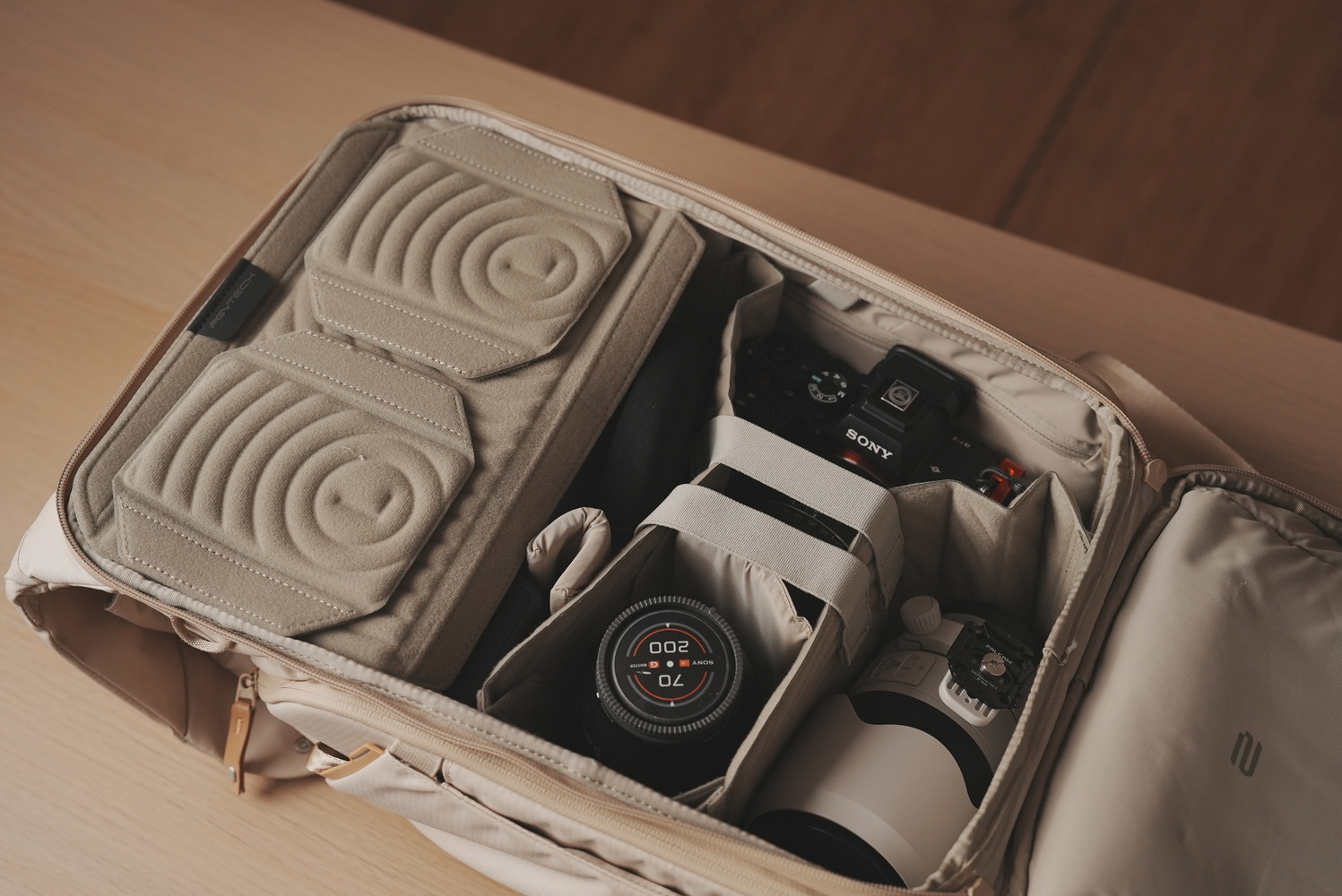
Application
While it can definitely carry a lot of camera gear, the Pgytech OneGo 2 seems to be a great backpack option for shoots that require less gear, as maxing it out would probably be too much load for the user’s back because of the weight of cameras and lenses. At the same time, it can be a good option for everyday carry, whether you’re carrying a camera or just everyday productivity tools such as a laptop and personal items.

It’s also a solid option for travel, especially in urban areas. It can be used for outdoor trips as well; however, because of the lack of waist straps and height adjustments on the shoulder straps, it might not be the most comfortable for long hikes. While the bag is relatively resistant to dust and moisture, it’s not the kind of bag you’d want to set down on muddy surfaces—especially not the sand khaki/off-white variant.
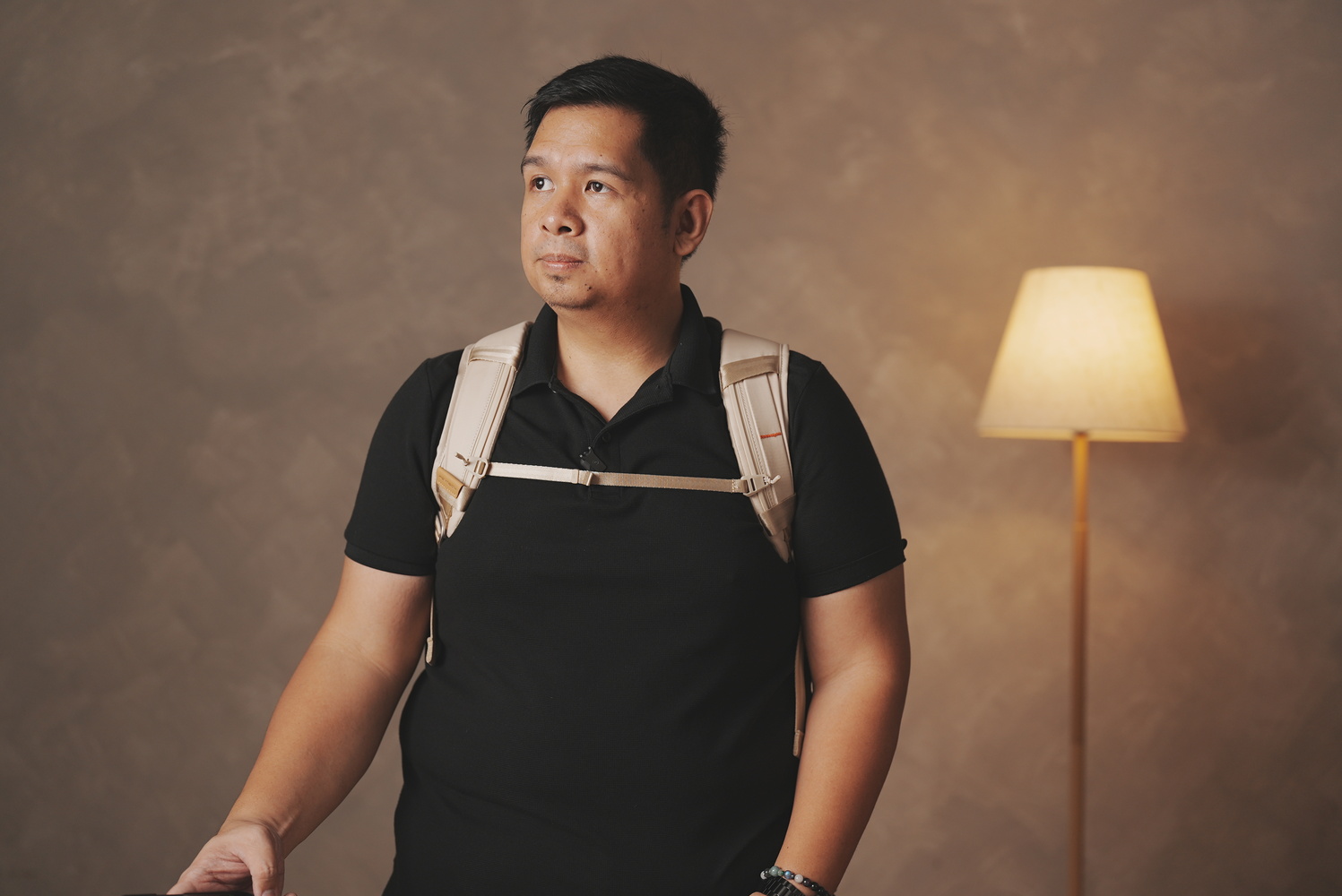
Overall, it’s a stylish and practical bag for everyday carry and urban travel use. Most photographers probably wouldn’t fill the bag completely with gear, which is great because the dividers can be rearranged to maximize space. While the appearance is rather minimal, the functionality definitely offers more than expected. Altogether, that makes it an easy recommendation for anyone looking for a roomy bag to accommodate all their gear.
What I Liked
- Minimalist yet relatively durable exterior
- Abundant accessory pockets
- Holds more gear than expected
- Quick-access side doors
- Relatively friendly price
What Can Be Improved
- Removable waist straps
- More accessory attachment loops



